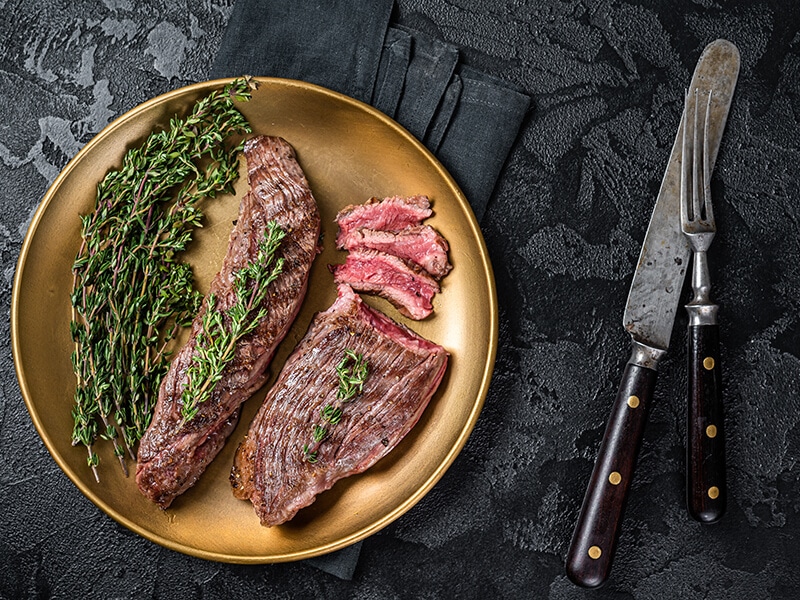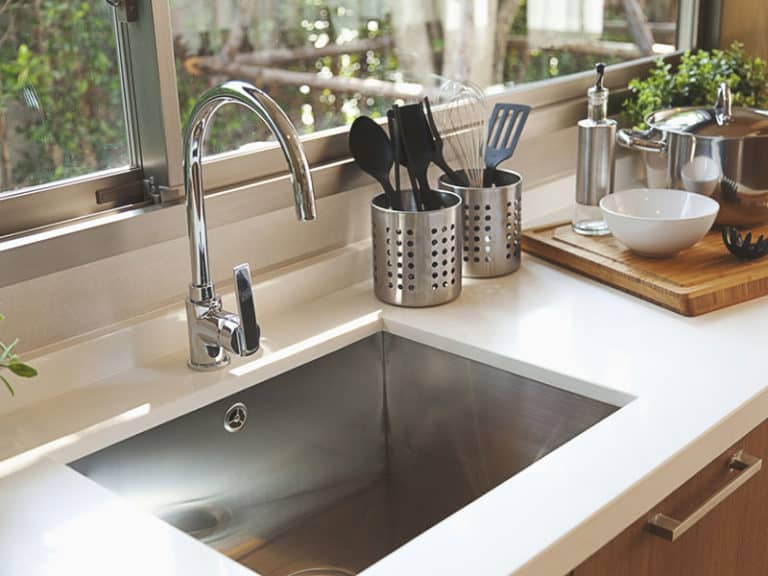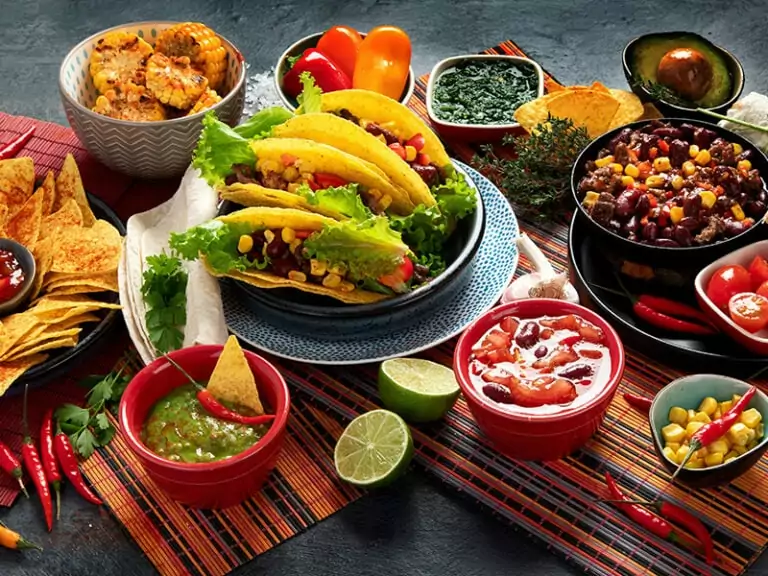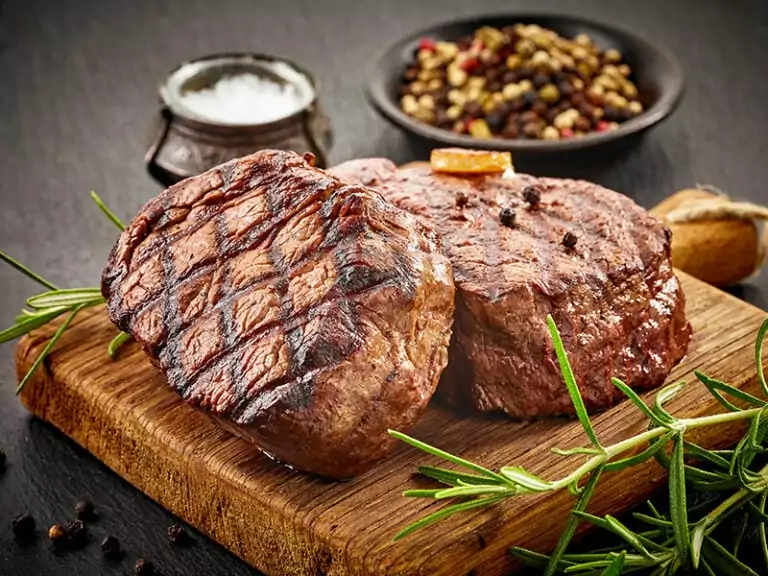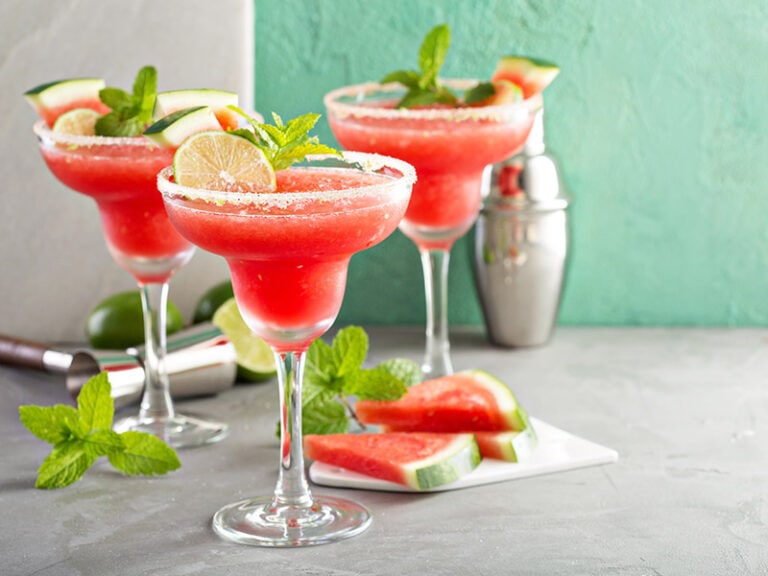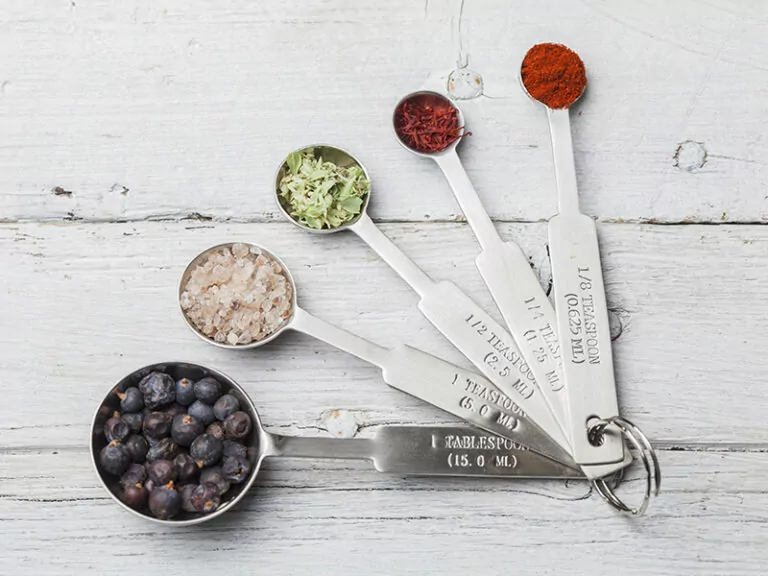What is a bavette steak? And how to cook it perfectly? If you are confused and don’t know what to do with it, you are not alone. Many others also can’t distinguish it from other kinds of steak. So, find out everything you need about bavette steak in this post.
I will provide comprehensive information about bavette steak, from definition to cooking methods, recipes, and more. After reading this, you will appreciate bavette steak more and know how to make great dishes with it!
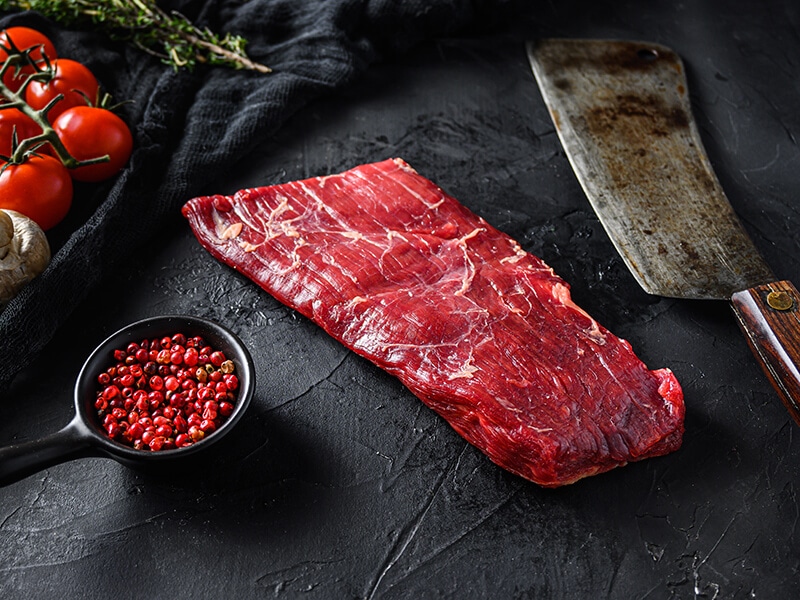
What Is A Bavette Steak?
You might have heard a lot about sirloin, ribeye, or tenderloin steaks, but how about bavette steak? It is a less commonly known cut of beef. Sometimes, people also mistake it for flank or skirt steak. The section below will explain what it really is.
Definition
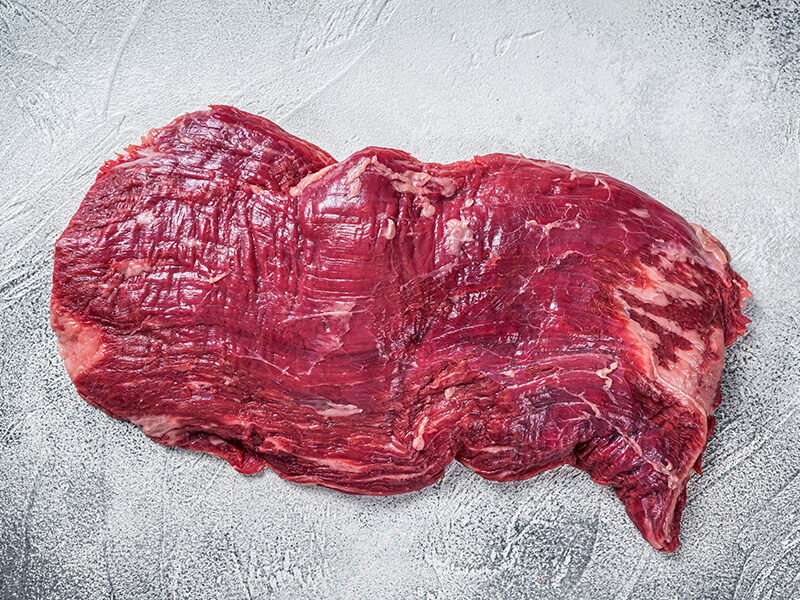
Bavette comes from the French, which means “bib”. It is a flat cut from the cow’s abdominal muscles or lower chest area. People also call it flap steak or butcher’s cut because butchers kept this good portion for themselves.
This fibrous cut is cheap but flavorful, so it has become increasingly popular in Mexico and other meat-eating countries. You can easily find it in many Mexican cuisines like tacos, fajitas, or tortas.
Colombia and Brazil are also two Latin American countries that consume bavette a lot. In Brazil, this cut is known as fraldinha, which means “little diaper”, whereas Columbians call it sobrebarriga, which refers to “over the belly”.
It is understandable why some people confuse bavette steak with skirt or flank steak. These cuts are similar in that they are long, thin, and come from the nearby part of the cow. While bavette cuts from the bottom sirloin, skirt steak cuts from the further down part in the underbelly.
Taste
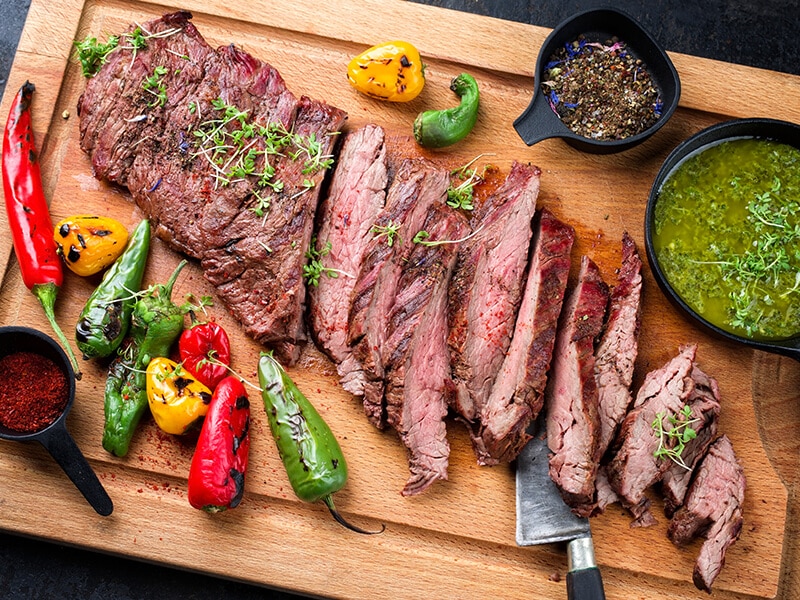
Even though bavette steak is a secondary steak, it is juicy, beefy, and rich in flavor. Its texture is loose but grainy since it is from the well-exercised part of the cow. As a result, it could be tough.
However, you can make it into many excellent dishes with the correct preparation. Marinate the bavette, cook at high heat, and cut across the grain to increase the tenderness and savory.
Grilling, broiling, or braising are all good for making the bavette delicious. You can use bavette steak in jaritas, stir-fries, or on its own. I will list down the best bavette steak recipes and how to cook them later in this post.
Would you like to know why even the chef’s best choice is bavette steak? Here it is!
Nutrition
Bavette steak is not only savory but also high in proteins. 1g of bavette steak contains 172 cal. The nutrient facts include 0.2g carbs, 10.5g fat, and 19g protein.(1) Therefore, each serving of this steak will provide sufficient energy and health benefits.
Where Can You Buy Bavette Steak?
Though bavette is less popular than other cuts, you can still find it in several places. Butchers or a supermarket butchery will provide bavette cuts. In addition, several online stores also have quality bavette, so you can easily order it from home.
You may want to buy from places where they have experienced sellers. Unknowledgeable ones may mistake it for similar steaks. But, those with good knowledge about different kinds of steak will give you the right cut.
Choosing Good Bavette
When buying bavette steak, look for bright red meat with a loose-looking texture. These signs indicate its freshness and tenderness. Also, it helps the seasonings absorb better when the grain is loose and has suitable spaces.
The thicker and the more marble the piece of bavette is, the better to make a yummy steak. While the thick meat is not easily cooked, the marble makes the steak richer.
Some people believe grass-fed bavette is better because it contains more nutrients and is tastier. You can recognize this kind by a darker red color and orange-inclined fat.
Is dry-aged beef better than wet-aged beef? These 2 types of meat can be slightly different, but both are excellent. If you prefer a deep taste, you should choose dry aging. The wet aging will deliver nice tenderness.
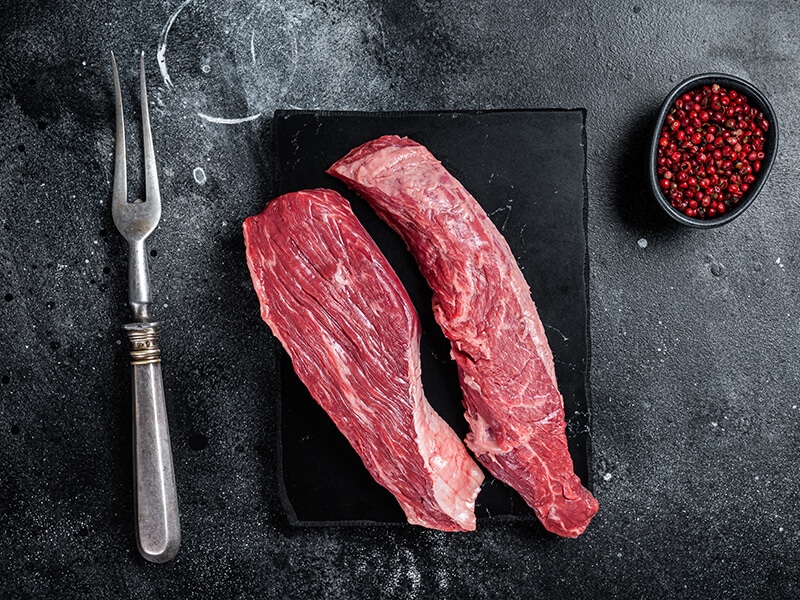
How To Cook Bavette Steaks
Bavette steak can be as excellent as other primary steaks if you cook it right. Otherwise, it will be tough and dry. Each step is essential in perfecting this meat, so let me walk you through them.
Preparation
Many dishes don’t require much time in preparation, but you need to prepare bavette steak carefully. These simple steps can make a significant difference.
Step 1: Bring To Room Temperature
If you have just bought the bavette from a butcher where they have newly cut it from the cow, you can skip this step. However, when your meat has been refrigerated, you need to take it out of the fridge. Then, leave it out at room temperature for about 30 minutes.
This helps you to cook the meat evenly from the outside to the inside. Furthermore, by doing so, you will ensure the interior reaches a safe temperature.
Step 2: Remove Excess Fat
Good beef steaks contain a good proportion of fat which makes the steaks tender and juicy. Nonetheless, when the bavette steak comes with excess fat, you should get rid of it before cooking.
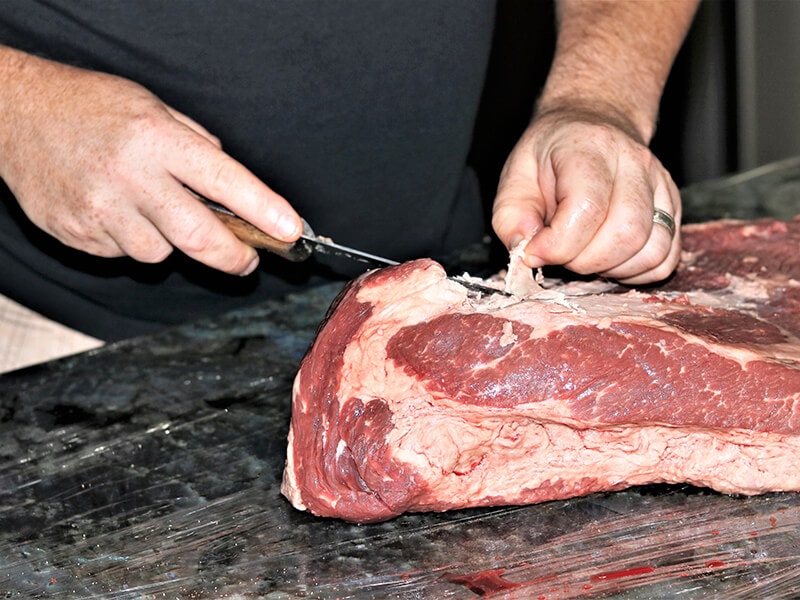
Step 3: Tenderize The Bavette
Bavette steak is fibrous, so it is good to tenderize it before cooking. There are several ways you can do this. A meat hammer or rolling pin or seasoning method can make it tender.
Marinating bavette helps it absorb all the good seasonings plus the acidic elements tenderizing the meat. Meanwhile, a dry rub of Kosher salt, spices, and sugar for up to 12 hours is suitable for a barbecue.
Brining the bavette is another good option to consider. Although making a brine can take more time, it results in flavourful, tender, and juicy steak.
Cooking Methods
In this section, I will show you the 3 popular methods of cooking bavette steak. So, you can choose from what is available at your home. Before cooking, please discard any liquid from the meat and pad dry it.
Grill
It is best to cook bavette steak at high heat because it isn’t as thick as other steaks. Therefore, grilling is a perfect choice.
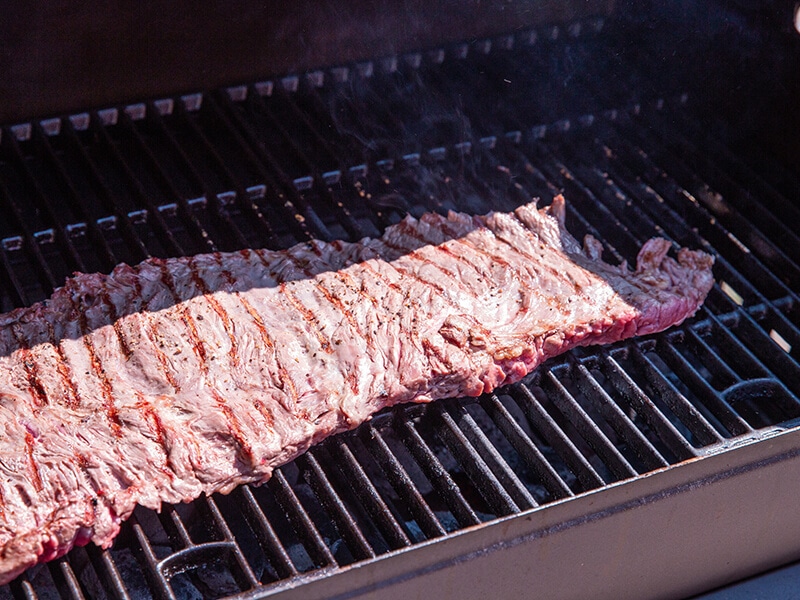
Step 1: Preheat the grill
For a charcoal grill, you need to lid up the coals and let them burn down. Pile a bit more charcoal in the middle than the outside. When the grill’s temperature is about 425 to 475 F, it is time to grill.
If you can’t find a charcoal grill, a gas grill will work, too. You also need to preheat it to 450 F. Then, place the grill pan on high heat for about 5 minutes. It is ready to cook when the pan is smoking hot.
Step 2: Cook
Place the steak on the grates over the hot coals. For a grill pan, put the meat in when you see smoke from the pan. It will take about 3 – 5 minutes to grill each side.
Grill the steak to rare or medium-rare (130 F) to avoid chewiness. Use an instant-read thermometer to check the interior.
Step 3: Let the meat rest
The next step after grilling is to rest the steak for about 10 minutes. By doing so, the juices would recirculate into the meat and make it juicy.
Let this chef show you how to grill bavette steak.
Cast Iron Or Fry Pan
This easy method of cooking does not require a lot of effort. You can quickly sear the steak and it is ready to serve in just a few minutes.
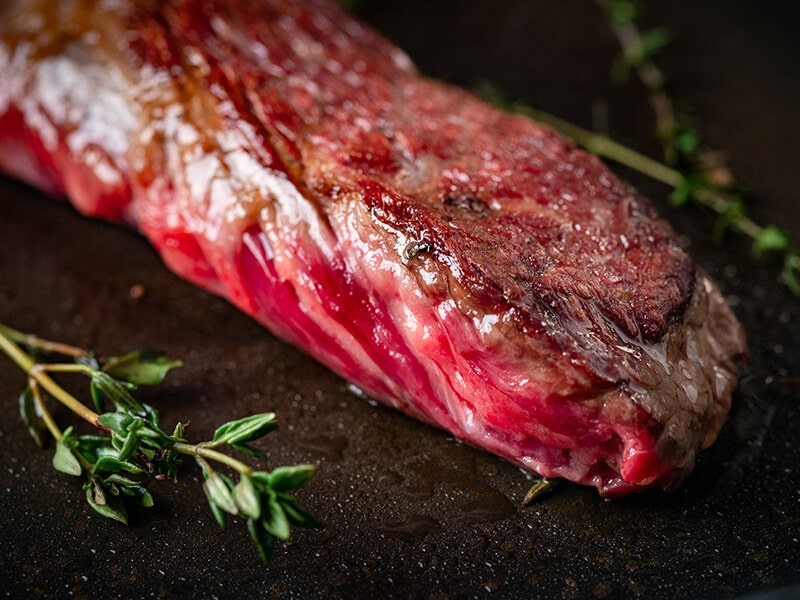
Step 1: Heat the pan
You can place a non-stick or cast iron frying pan on the stovetop. Turn it on to high heat until the pan is smoking. Next, add a bit of oil.
Step 2: Fry the steak
Cook the steak quickly for 2 – 3 minutes on one side and turn to the other side and fry for 2 to 3 minutes more. You can time it depending on the steak’s thickness, but don’t overcook it.
Even when you turn off the stove, the heat continues cooking. If the meat is fully cooked in the pan, it will be dry and tough when served. However, you should not undercook it either, and make sure the inside is at a safe temperature.
Step 3: Rest
After turning off the heat, remove the pan from the stove to a warm place and let the meat rest for 5 minutes.
Refer to this easy pan-seared method to make a perfect bavette steak.
Sous Vide
Sous vide is a good method to perfectly cook bavette steak. After that, searing it quickly in a cast iron pan enhances the taste and flavors.
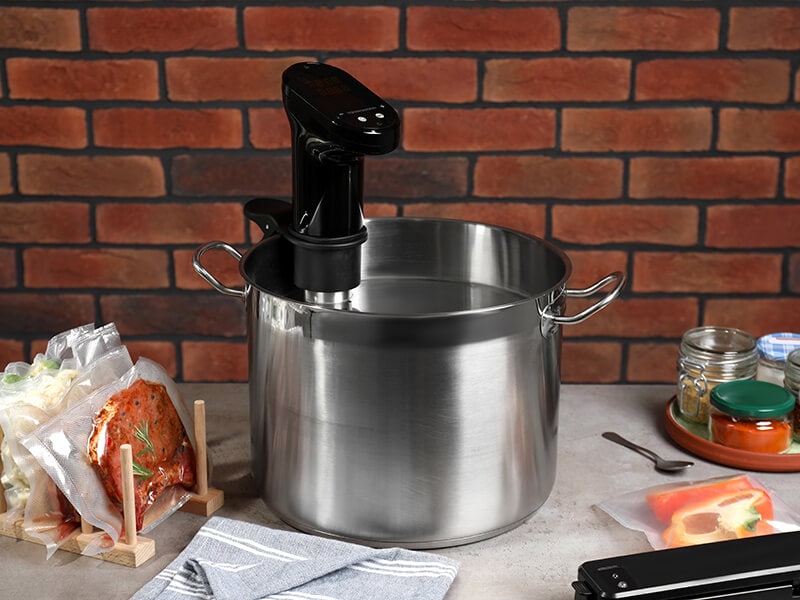
Step 1: Set the sous vide precision cooker
First, put the seasoned steak in a sous vide bag and seal the bag well to prevent any water from getting inside. Then, set the water bath at 130 F. This would result in a medium rare steak when finished.
Step 2: Cook sous vide bavette
Next, set the timer for 2 hours. When cooking is completed, remove the bag from the water bath. Drain any liquid from the steak to ensure its dryness.
Step 3: Searing the steak
Preheat a cast iron pan on medium-high heat. After that, place the steak on the pan and sear the first side for 30 seconds to 1 minute. Turn to the other side and cook for about 1 minute more. You can add butter, garlic, and thyme.
Turn off the fire and remove the bavette steak from the pan. Remember to let the meat rest for 5 minutes before serving.
You can try sous vide bavette steak and pan-seared it following this guide.
Steak Temperature
People have different preferences on how well they like their steak cooked. Some prefer it rare, while others want medium. However, according to the U.S. food safety guideline, the beef’s internal temperature should reach 145 F for consumption.(2)
You will need a meat thermometer when cooking steak to check beef temperatures. The following table will show you various levels of cooking steak.
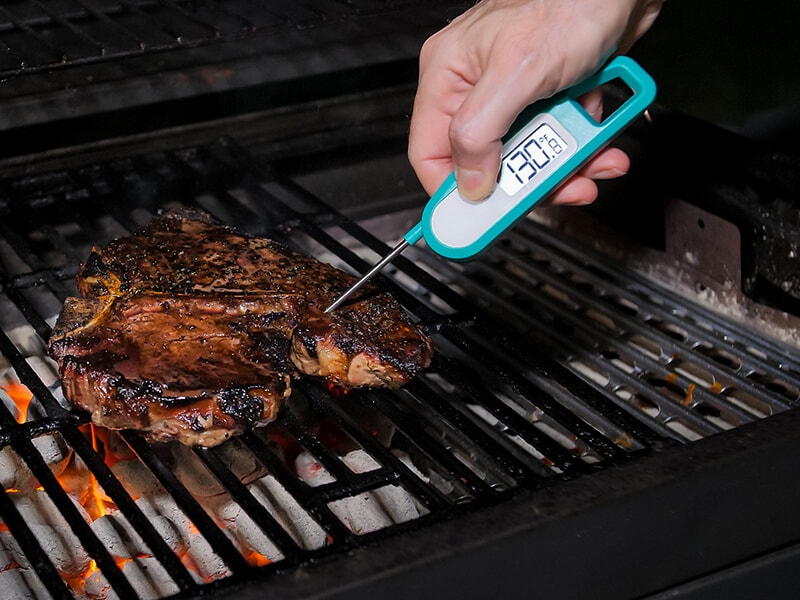
Tips For Perfecting Bavette Steak
There are several tips to cook bavette steak perfectly. Regardless of how hard you try, neglecting these small factors can result in an undesirable steak.
Room Temperature
When you get your meat from the fridge, leave it out until it reaches room temperature. If the steak is in the freezer, thaw it completely. Make sure the inside isn’t cold before you cook. Or it will affect the quality of the cooked steak.
Marinades
Marinade bavette not only helps to tenderize the meat but also increases its flavor. Different kinds of marinades can add extra flavors to the beef. The seasonings can easily seep into the cut and make it juicier.
Cook Quickly At High Heat
Cooking steak is not hard. The key is to cook it on very high heat and do it quickly. This process only takes a few minutes. In contrast, lower heat and longer time will lead to a tough and dry steak due to its loss of moisture and liquid.
Rest The Meat
After the steak is done, remember this vital step. Allow the meat to rest on foil paper for 5 – 10 minutes. Besides distributing the heat evenly, this also makes the beef juicier.
Slice Bavette Steak Properly
Many people like this cut of beef because it is juicy and flavorful. Yet, bavette steak is fibrous, so it can be tough to chew. Knowing how to cut it correctly is essential because it can affect the steak’s chewiness.
When slicing this steak, you need to use a shape knife and cut it across the grain. The purpose is to cut through all the lean fibers and make it easier to chew.
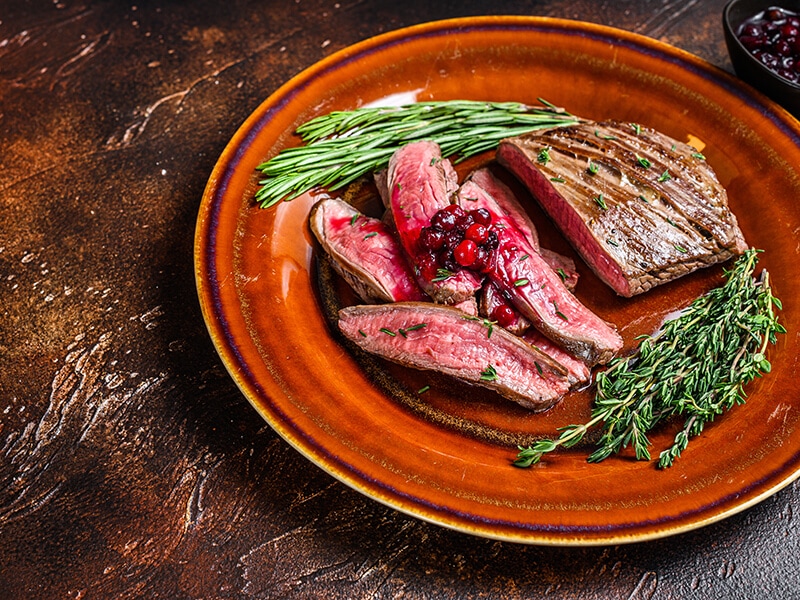
Bavette Steak Recipes
There are so many wonderful bavette steak recipes, so let me share with you some of them. These dishes bringing out the best beefy savor of this cut will be a nice treat.
Bavette Steak With Chimichurri Sauce
This recipe is straightforward, but you will love how it turns out. The pan-seared steak is juicy and tender, plus homemade chimichurri sauce makes it taste even better. This steak is great in steak tacos, fajitas, or steak and eggs.
Chimichurri sauce adds extra flavors to dishes like bavette steak.
Bavette Steak And Roasted Garlic Pan Sauce
This mouth-watering dish is elevated by adding delicious garlic sauce. Roasted garlic and seared beef bring a pleasing combination. Served with mashed potato and roasted asparagus, this provides a healthy, nutritious meal for your family.
Rustic Grill Bavette Steak Salad
This recipe will give you a nice quick, healthy dinner and boosts your appetite. While bavette steak is grilled on hot charcoal, charred cherry tomatoes, some mozzarella, and sliced radishes add extra flavors to the salad.
Storing Bavette Steak
Like other beef cuts, you can refrigerate bavette steak to preserve it. Raw bavette has a longer shelf life than cooked steak when properly stored.
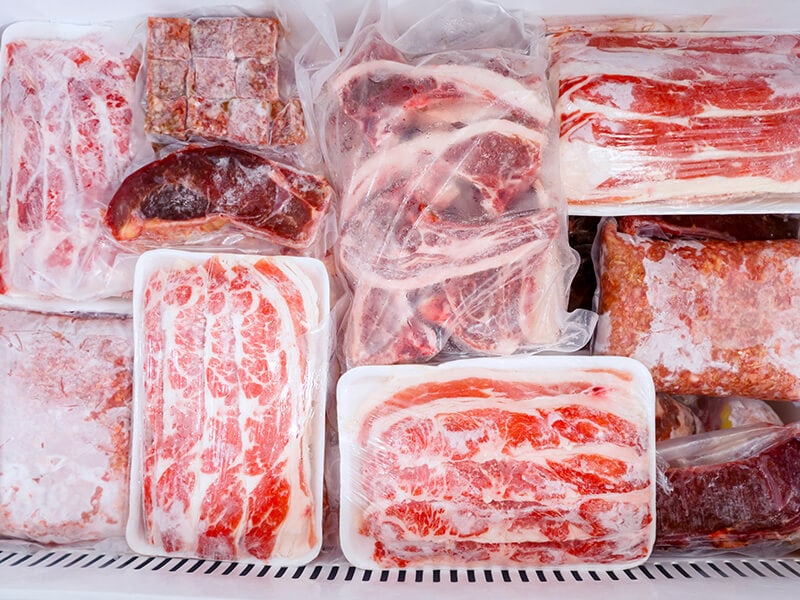
Raw Bavette Steak
When you buy raw meat and are not going to cook it soon, you can keep it in the fridge for safe cooking later. Before storing, wrap the bavette in plastic wrap and place it in an airtight container. It will be fresh for 3 to 5 days.(3)
You can also freeze raw bavette for a longer time. First, wrap the raw meat in plastic, parchment paper, or foil. Then, put it in a frozen-grade container or plastic zipper to keep it from freezer burn. Doing that can last up to 12 months.
Cooked Bavette Steak
What if you have cooked a big portion of bavette steak and there are a lot of leftovers? Why don’t you refrigerate your leftovers in an airtight container? You should consume it within 4 days.
Someone may ask if it’s ok to store the cooked steak in the freezer. The answer is yes! Frozen leftovers are safe to eat within 2 to 3 months. However, the sooner you consume it, the better!
FAQs
Bavette steak is less popular, so many confuse it with other kinds. Therefore, I have listed down below some more related questions. If you are also wondering about these matters, here are your answers.
Try The Butcher’s Secret Cut
Many people love the fancy, stunning beef steaks served at restaurants. But, do you know that you can have the same fantastic bavette steak at home? Even though this steak is not as thick as the primary ones, it tastes so rich.
Following the tips and cooking methods above will not fail you. So, why don’t you try making it and leave me some comments below about how you like it? If you find this post interesting, please like or share it with others!
Nutrition Facts
4 servings per container
- Amount Per ServingCalories236
- % Daily Value *
- Total Fat
16.1g
25%
- Saturated Fat 6.5g 30%
- Cholesterol 85mg 29%
- Sodium 351mg 15%
- Potassium 17mg 1%
- Total Carbohydrate
1.1g
1%
- Dietary Fiber 0.2g 0%
- Sugars 0g
- Protein 22.3g 44%
- Calcium 8%
- Iron 3%
- Vitamin D 4%
* The % Daily Value tells you how much a nutrient in a serving of food contributes to a daily diet. 2,000 calories a day is used for general nutrition advice.
References
- Bavette Steak Calories, Carbs & Nutrition facts MyFitnessPal.
- Assistant Secretary for Public Affairs (ASPA) (2022) Cook to a safe minimum internal temperature, FoodSafety.gov.

